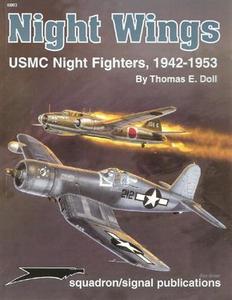
Free Download Thomas E. Doll - Night Wings: USMC Night Fighters, 1942-1953 - Aircraft Specials series
Squadron/Signal Publications | 2000 | ISBN: 0897474198 | English | 66 pages | PDF | 98.24 MB
Squadron/Signal Publications 6083
The US Marine Corps (USMC) did not pioneer the art of night combat flying. The British Royal Air Force (RAF) and the German Luftwaffe claimed that distinction due to circumstance. The Marine Corps, Navy, and Army Air Corps wasted no time in getting into the game and were quick to learn.
Developing the techniques needed to locate a flying target at night, in the air, and destroying that target was not an easy task. The Navy alone formed 25 night fighting squadrons between April of 1943 and June of 1945. The Marine Corps formed eight night fighting units between November of 1942 and May of 1944. Seven of these squadrons entered combat, where they destroyed 106 enemy aircraft.
After World War II, most of the USMC night fighting squadrons were deactivated and their personnel either transferred to other squadrons or -as in most cases - sent home, where they went to school, or got married and started families.
During the short period of peace between World War II and the Korean War, the Marine Corps redesignated two day squadrons to night fighting units and concentrated on improvements in the field of locating a flying enemy aircraft in the dead of night. One of the newly redesignated squadrons, VMF(N)-513, would handle all of the Marine Corps' night fighting duties in Korea after VMF(N)-542 returned to the United States in March of 1951.
Most of the Marine Corps pilots and radar operators (R/Os) that flew in Korea learned their trade during World War II. In Korea, the enemy flew faster aircraft; however, so did the Marines. The discipline and attention paid to working as a team in no way interfered with the individual Marine's ability to 'think on his feet.' The Marine aviators adapted, invented and devised tactics, and almost always stayed ahead of the game.
